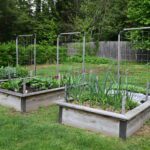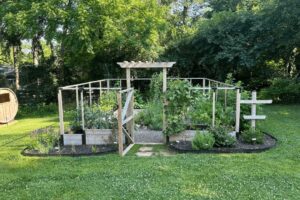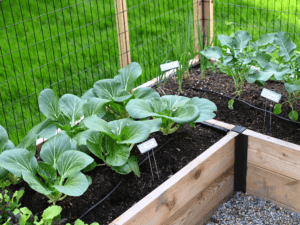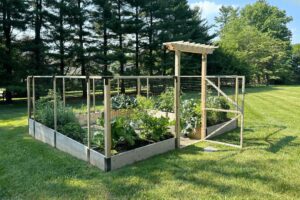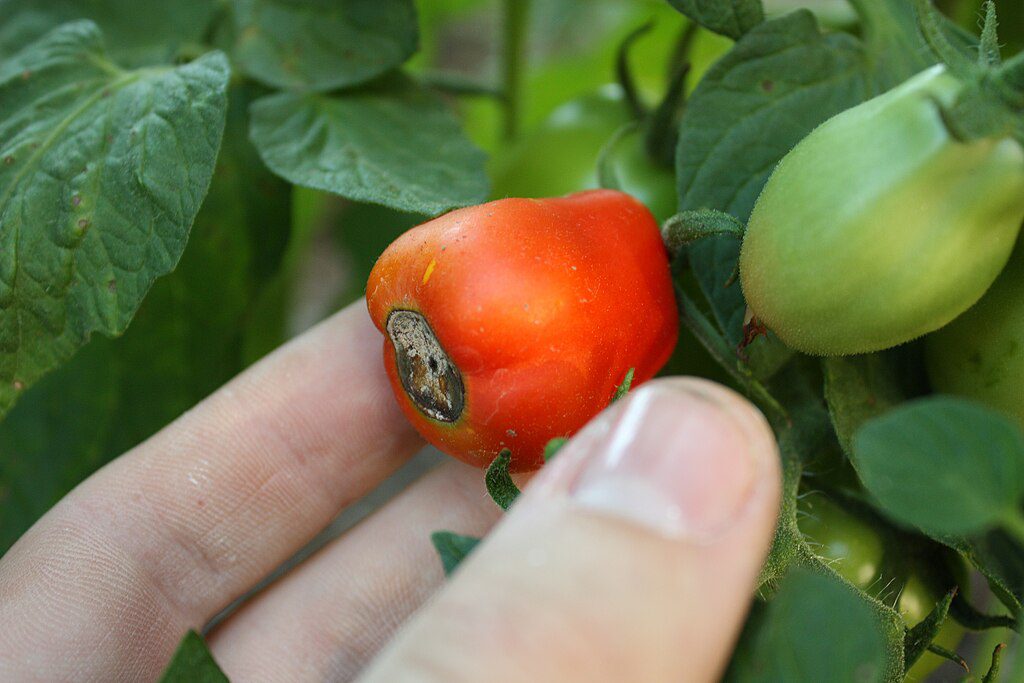
[et_pb_section fb_built=”1″ admin_label=”section” _builder_version=”4.16″ da_disable_devices=”off|off|off” global_colors_info=”{}” da_is_popup=”off” da_exit_intent=”off” da_has_close=”on” da_alt_close=”off” da_dark_close=”off” da_not_modal=”on” da_is_singular=”off” da_with_loader=”off” da_has_shadow=”on”][et_pb_row admin_label=”row” _builder_version=”4.16″ background_size=”initial” background_position=”top_left” background_repeat=”repeat” global_colors_info=”{}”][et_pb_column type=”4_4″ _builder_version=”4.16″ custom_padding=”|||” global_colors_info=”{}” custom_padding__hover=”|||”][et_pb_text _builder_version=”4.27.0″ _module_preset=”default” text_text_color=”#000000″ link_font=”|700|||on|||#000000|” link_text_color=”#000000″ hover_enabled=”0″ global_colors_info=”{}” header_2_font_size_last_edited=”on|phone” header_2_font_size_phone=”24px” header_2_line_height=”1.5em” sticky_enabled=”0″]
Introduction
Have you ever noticed brown watery or leathery spots on your homegrown tomatoes? Your plants may be suffering from blossom end rot (BER).
When left untreated, BER can drastically reduce the amount of usable produce you’re able to grow, harvest, and enjoy at home. Early identification and treatment is key to preventing blossom end rot – especially consistent watering for regular calcium uptake. In this article, we’ll explore some common causes and signs of BER as well as simple solutions you can take today to maintain a healthy and abundant raised bed vegetable garden.
[/et_pb_text][et_pb_text _builder_version=”4.25.2″ _module_preset=”default” text_text_color=”#000000″ link_font=”|700|||on|||#000000|” link_text_color=”#000000″ global_colors_info=”{}” header_2_line_height=”1.5em” header_2_font_size_phone=”24px” header_2_font_size_last_edited=”on|phone”]
What is Blossom End Rot?
Blossom end rot is a physiological disorder caused by calcium deficiency in plants. Blossom end rot commonly occurs in tomatoes but can also affect peppers, squash, cucumbers, eggplant, and melons. All of these crops require particularly high amounts of calcium during development – therefore, their fruit production is more affected by a lack of calcium. Calcium is essential for plant health because it strengthens cell walls and supports overall growth.
[/et_pb_text][et_pb_image src=”https://backyard-eats.com/wp-content/uploads/2024/06/1024px-Pomodorini_sulla_pianta.jpg” title_text=”Pomodorini” _builder_version=”4.25.2″ _module_preset=”default” global_colors_info=”{}”][/et_pb_image][et_pb_text _builder_version=”4.27.0″ _module_preset=”default” text_text_color=”#000000″ link_font=”|700|||on|||#000000|” link_text_color=”#000000″ global_colors_info=”{}” header_2_line_height=”1.5em” header_2_font_size_phone=”24px” header_2_font_size_last_edited=”on|phone” hover_enabled=”0″ sticky_enabled=”0″]
Causes of Blossom End Rot
The calcium deficiency that leads to blossom end rot may be caused by a lack of nutrients in the soil. However, the main trigger for BER is inconsistent watering practices. This may be caused by irregular hand-watering (like with a watering can) or hot weather that accelerates evaporation and causes plants to burn through nutrients more quickly. With seasonal soil amendments and a proper watering system, you can help your plants get the calcium they need to stay healthy and produce quality fruit..
Inconsistent watering is harmful mainly because periods of no or low water prevent plants from absorbing calcium steadily. When plants (like tomatoes) don’t get enough calcium while growing, it impairs fruit development – causing the dark, sunken spots of blossom end rot. If left untreated, blossom end rot can render fruit inedible and affect multiple fruits on the same plant, or other plants in the garden.
[/et_pb_text][et_pb_text _builder_version=”4.27.0″ _module_preset=”default” text_text_color=”#000000″ link_font=”|700|||on|||#000000|” link_text_color=”#000000″ global_colors_info=”{}” header_2_line_height=”1.5em” header_2_font_size_phone=”24px” header_2_font_size_last_edited=”on|phone” sticky_enabled=”0″]
Importance of Watering
Therefore, it’s crucial to water your plants consistently to maintain even soil moisture and prevent BER. Installing a drip irrigation system in raised beds is a great way to water plants consistently and evenly at the roots for the appropriate amount of time each day.
Soil pH also directly affects how nutrients are chemically available to plants. Acidic soils (low pH) enhance the availability of nutrients like iron and phosphorus, while alkaline soils (high pH) favor calcium and magnesium uptake. Ideally, your garden soil’s pH should be between 6.0 and 6.5. Your garden maintenance team can recommend strategies for monitoring and amending soil pH levels.
[/et_pb_text][et_pb_image src=”https://backyard-eats.com/wp-content/uploads/2023/12/Copy-of-Drip-Irrigation-scaled.jpg” title_text=”Copy of Drip Irrigation” _builder_version=”4.25.2″ _module_preset=”default” global_colors_info=”{}”][/et_pb_image][et_pb_text _builder_version=”4.25.2″ _module_preset=”default” text_text_color=”#000000″ link_font=”|700|||on|||#000000|” link_text_color=”#000000″ global_colors_info=”{}” header_2_line_height=”1.5em” header_2_font_size_phone=”24px” header_2_font_size_last_edited=”on|phone”]
Symptoms of Blossom End Rot
Blossom end rot (BER) manifests in distinct stages and symptoms that affect fruit-bearing plants like peppers and tomatoes. BER typically targets the first fruits of the season or those experiencing rapid growth. At first, fruits affected by BER will develop small, water-soaked spots at the blossom end or “bottom end” of the fruit across from the stem. Gradually these spots will enlarge and darken into dark brown or black patches. As the condition progresses, these spots will become sunken and leathery in texture, rendering the affected area unfit for consumption.
Blossom end rot can be distinguished from diseases like blight by its area of effect. BER primarily affects the blossom end (bottom) of the fruit, causing sunken, leathery patches that darken over time. In contrast, diseases such as early blight and late blight typically start on leaves and stems, manifesting as dark, concentric spots or lesions that spread outward and may affect multiple plant parts beyond just the fruit. Unlike blight, BER is not a fungus or disease.
[/et_pb_text][et_pb_image src=”https://backyard-eats.com/wp-content/uploads/2024/06/1024px-Blossom_end_rot.jpeg” title_text=”1024px-Blossom_end_rot” _builder_version=”4.25.2″ _module_preset=”default” global_colors_info=”{}”][/et_pb_image][et_pb_text _builder_version=”4.27.0″ _module_preset=”default” text_text_color=”#000000″ link_font=”|700|||on|||#000000|” link_text_color=”#000000″ global_colors_info=”{}” header_2_line_height=”1.5em” header_2_font_size_phone=”24px” header_2_font_size_last_edited=”on|phone” hover_enabled=”0″ sticky_enabled=”0″]
Preventing Blossom End Rot
To effectively combat blossom end rot (BER) in your garden, it’s crucial to implement preventive measures and targeted solutions. Start with thorough soil preparation, including testing and adjusting soil pH levels to the optimal range of 6.0-6.5. Consistent watering practices are equally important; maintain steady soil moisture levels through proper irrigation techniques to support nutrient availability and minimize heat stress. Strategic use of mulch can help prevent temperature and moisture fluctuations that lead to stress. In edible landscaping, mulch is a good choice for beds with perennial plants.
Drip irrigation systems are a great solution for garden watering. Drip irrigation runs along the soil level and delivers water directly to plant roots. This maintains consistent moisture levels and prevents evaporation from overhead watering. Our irrigation systems are also equipped with a timer that adjusts the frequency and amount of water provided, so your plants will receive the essential amount of water even in the heat of summer.
[/et_pb_text][et_pb_text _builder_version=”4.27.0″ _module_preset=”default” text_text_color=”#000000″ link_font=”|700|||on|||#000000|” link_text_color=”#000000″ global_colors_info=”{}” header_2_line_height=”1.5em” header_2_font_size_phone=”24px” header_2_font_size_last_edited=”on|phone” hover_enabled=”0″ sticky_enabled=”0″]
Importance of Maintenance
For home gardeners with busy lifestyles or vacation plans, installing a drip irrigation system means more than just efficient water use—it offers peace of mind. You can enjoy summer trips without worrying about your garden drying out! Continuous hydration will support consistent plant growth and yield healthy produce throughout the season.
Our convenient maintenance services can also provide extra support with weeding, harvesting and more for busy gardeners – like balanced fertilization to support strong root development and fruit formation. By implementing these strategies, gardeners can significantly reduce the risk of BER and maintain a productive and visually appealing garden.
[/et_pb_text][et_pb_text _builder_version=”4.27.0″ _module_preset=”default” text_text_color=”#000000″ link_font=”|700|||on|||#000000|” link_text_color=”#000000″ global_colors_info=”{}” sticky_enabled=”0″ header_2_line_height=”1.5em” header_2_font_size_phone=”24px” header_2_font_size_last_edited=”on|phone”]
Conclusion
Preventing blossom end rot (BER) hinges on early detection and consistent care. Monitor your garden regularly for signs of BER and implement proactive measures like adjusting soil pH and practicing balanced watering and fertilization. Drip irrigation can simplify watering management and protect your crops. Learn more on our website or contact us about incorporating drip irrigation into your garden.
Don’t forget to subscribe to our email newsletter for more gardening tips – let’s nurture thriving gardens together!
[/et_pb_text][/et_pb_column][/et_pb_row][et_pb_row _builder_version=”4.25.2″ _module_preset=”default” global_colors_info=”{}”][et_pb_column type=”4_4″ _builder_version=”4.25.2″ _module_preset=”default” global_colors_info=”{}”][et_pb_text _builder_version=”4.25.2″ _module_preset=”default” global_colors_info=”{}”]
Tomato images from users Luigi Chiesa and A13ean on Wikimedia Commons. Drip irrigation photo by Rachel Rudy.
[/et_pb_text][/et_pb_column][/et_pb_row][/et_pb_section]


